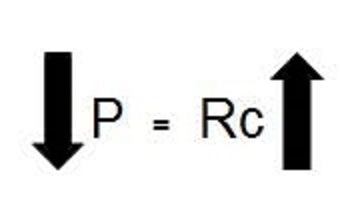Force is used for two main reasons. One is to contain the weld nugget and prevent expulsion and the other is to strengthen the weld by forging the solidifying weld nugget. It is easy to see that if welding force is changed these actions will be affected to some degree. Expulsion could increase or decrease and the resultant weld strength could also increase or decrease.
Another secondary effect is the relationship between force and heat generation. As force is changed the contact between the electrode and part also changes. More force means better contact between the electrode and work piece. Therefore current will flow more readily and there will be less heat generated at the electrode face. The Rc contact resistance has been reduced. Conversely less force leads to reduced contact with the work piece and reduced current flow due to increased contact resistance Rc between the electrode and work piece. Therefore heat in the system can be increased or decrease by changing force. Heat and force are inversely proportional.

Here P - pressure is illustrated in place of force. They both represent force being applied to the part.
Another factor in this relationship is that the weld formation can be forced toward the center of the part by increasing force. This also can reduce surface expulsion if present. Indentation could also be altered.
Reference: RWMA Resistance Welding Manual 4th Edition

